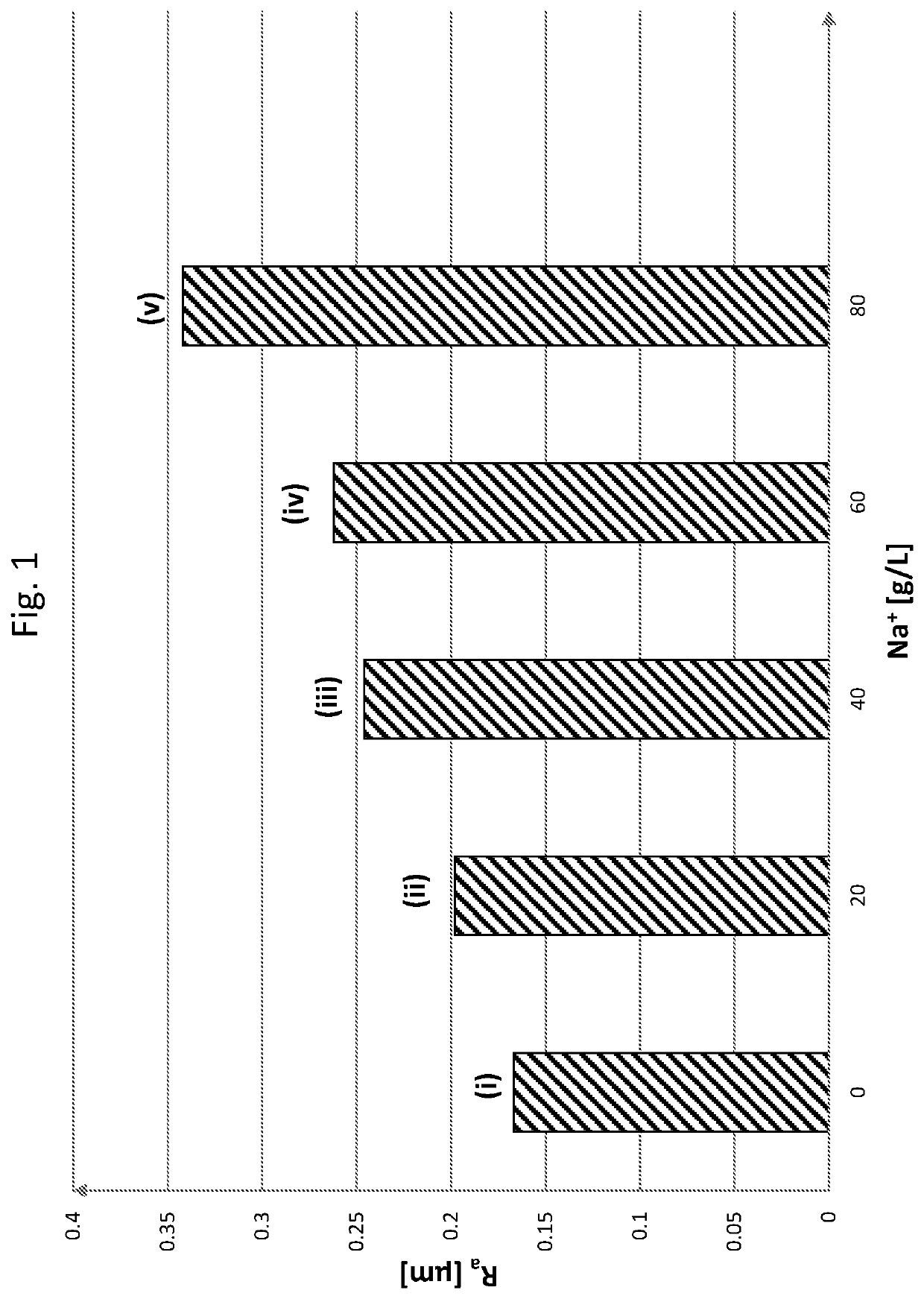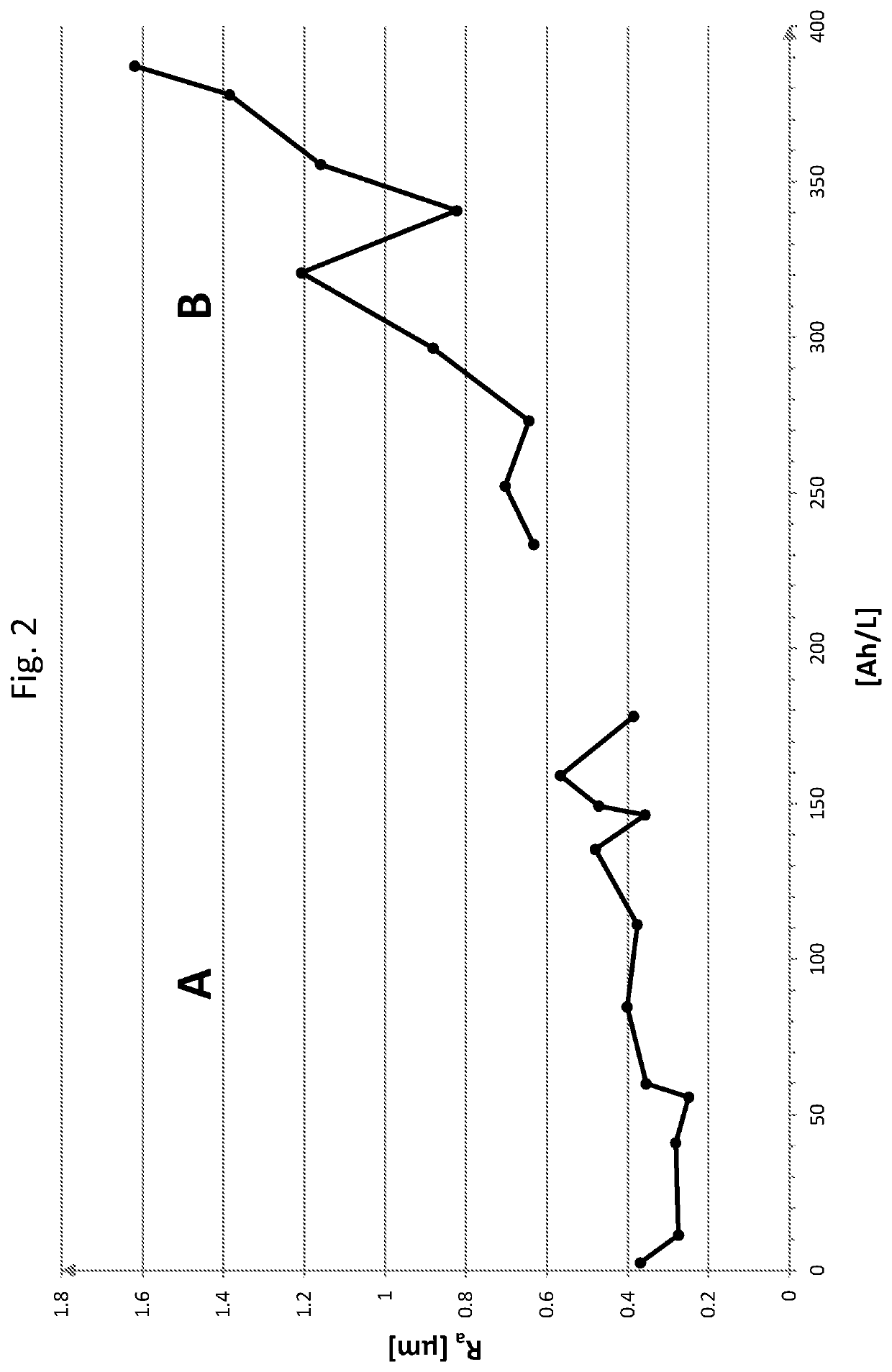Controlled method for depositing a chromium or chromium alloy layer on at least one substrate
a chromium alloy and controlled method technology, applied in the direction of layered products, chemistry apparatus and processes, electrolysis components, etc., can solve the problems of increasing the surface roughness of the treated substrate, and increasing the surface roughness
- Summary
- Abstract
- Description
- Claims
- Application Information
AI Technical Summary
Benefits of technology
Problems solved by technology
Method used
Image
Examples
example 1
[0106]In a first step five deposition bath samples ((I), (II), (Ill), (IV), and (V); approximately 1 L each) have been prepared, each sample identically containing a typical amount of 10 g / L to 30 g / L trivalent chromium ions, 50 g / L to 250 g / L sulfate ions, at least one organic complexing compound (an aliphatic mono carboxylic organic acid), ammonium ions, and bromide ions. No boron containing compounds have been used.
[0107]In each deposition bath sample a soluble, trivalent chromium ion containing source (dissolved Cr2(SO4)3; molecular weight: 392 g / mol) was utilized. The total amount of said source was in each case approximately 75 g per liter aqueous deposition bath sample, which is significantly below 100 g per liter deposition bath sample. Furthermore, said source was substantially free of alkali metal cations.
[0108]The pH of each sample was in the range from 5.3 to 5.9 (at 20° C.) and adjusted with alkali metal cation free compounds. However, each deposition bath sample differ...
example 2
[0117]In a first step a 25 L aqueous deposition bath was provided with a target pH within the range from 5.3 to 5.9 (at 20° C.) and comprising a tolerance range of ±0.3 pH units. The pH was adjusted with alkali metal cation free compounds. The bath furthermore contained a typical amount of 10 g / L to 30 g / L trivalent chromium ions, 50 g / L to 250 g / L sulfate ions, at least one organic complexing compound (an aliphatic mono carboxylic organic acid), ammonium ions, and bromide ions (no boron containing compounds have been used). The total amount of alkali metal cations was almost zero, and thus, within the very preferred range from 0 mol / L to 0.2 mol / L. For preparing the aqueous deposition bath a substantially alkali metal cation free, soluble, trivalent chromium ion containing source was utilized (which is typically a source comprising alkali metal cations in a total amount of 1 weight-% or less, based on the total weight of the source) in a total amount of significantly less than 100 ...
PUM
| Property | Measurement | Unit |
|---|---|---|
| thickness | aaaaa | aaaaa |
| thickness | aaaaa | aaaaa |
| surface roughness | aaaaa | aaaaa |
Abstract
Description
Claims
Application Information
 Login to View More
Login to View More - R&D
- Intellectual Property
- Life Sciences
- Materials
- Tech Scout
- Unparalleled Data Quality
- Higher Quality Content
- 60% Fewer Hallucinations
Browse by: Latest US Patents, China's latest patents, Technical Efficacy Thesaurus, Application Domain, Technology Topic, Popular Technical Reports.
© 2025 PatSnap. All rights reserved.Legal|Privacy policy|Modern Slavery Act Transparency Statement|Sitemap|About US| Contact US: help@patsnap.com


